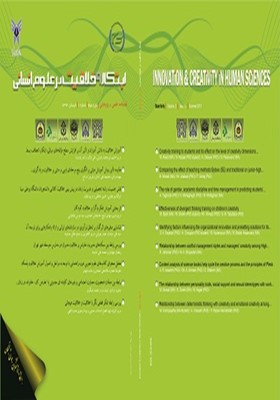-
-
List of Articles
-
Open Access Article
1 - Creativity training to students and its effect on the level of creativity dimensions (fluidity, originality, flexibility, and expandability)
Maryam Ahadi Noor Mohammad Rezaei Ali Delavar Nader Padervand -
Open Access Article
2 - Comparing the effect of teaching methods Bybee (5E) and traditional on junior-high school students’ creativity and learning
Mahsa Moradi Khadijeh Aliabadi Fariborz Dortaj -
Open Access Article
3 - The role of gender, academic discipline and time management in predicting students’ verbal creativity at Bu-Ali Sina
Abolghasem Yaghoobi Hossein Mohagheghi Maryam Mottaghian -
Open Access Article
4 - Effectiveness of divergent thinking training on children’s creativity
Maryam Badri Mehdi Sheikh Khodabakhsh Ahmadi Sayed Musa Tabatabai -
Open Access Article
5 - Identifying factors influencing the organizational innovation and presetting solutions for its development
Sayed Ali Seyadat Heydar Choupani Maryam Kazempour Moslem Malaki Hasanvand -
Open Access Article
6 - Relationship between conflict management styles and managers’ creativity among High Schools’ managers in Tehran city
Ramezan Jahanian Muhammad Ali Shayesteh -
Open Access Article
7 - Content analysis of science books help cycle the creative process and the principles of Plesk
Ali Reza Assareh Gholam Ali Ahmadi Samieh Shahmir -
Open Access Article
8 - The relationship between personality traits, social support and sexual stereotypes with work-family conflict in entrepreneurship women
Mahbobeh Moradi Eiman Doreh Mohammad Asgari -
Open Access Article
9 - Relationship between deterministic thinking with creativity and emotional creativity among students of public universities in Tehran city
Maryam Koohpayeiha Afzallsadat Hosseini Vida Razavi Nematollahi
-
The rights to this website are owned by the Raimag Press Management System.
Copyright © 2021-2025







